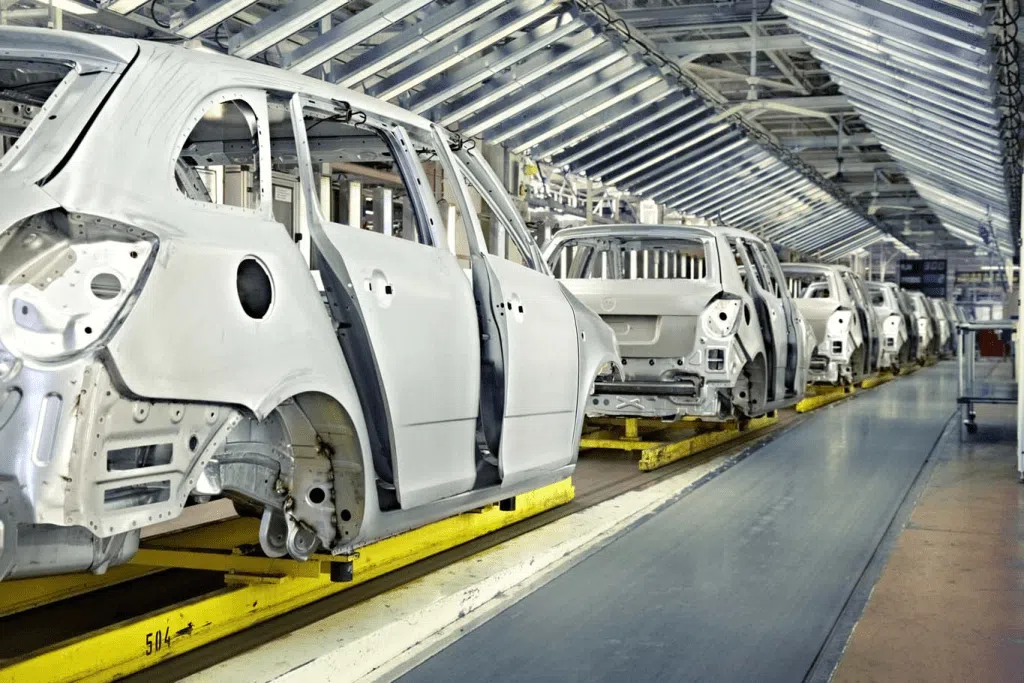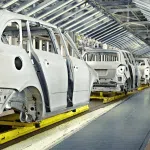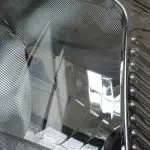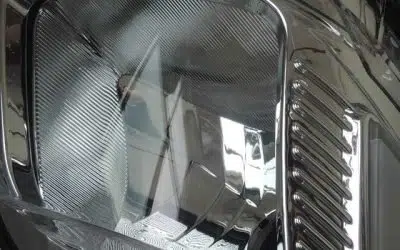
The design, prototyping, testing, and production of various automotive parts, such as the engine, gearbox, chassis, body, interior, and electronics, is part of the car manufacturing process. The final version of the vehicle is then assembled, inspected, and tested. Let’s have a look at the car manufacturing process. Car manufacturing is a technologically advanced and fascinating process.
- The use of technology and the execution of complex logic make it one of the most advanced.
- To understand the manufacturing process, one must know that an automobile consists of 3000 – 4000 parts and a typical manufacturer produces 700 to 2000 vehicles (some manufacturers have about 250 cars).
- A synchronised approach between auto manufacturers and Tier 1 suppliers will prevent delays and rejects from affecting production volumes (lengthening the time enthusiasts like us have to wait for new cars).
- Nowadays, manufacturers use several exciting production techniques.
- It has evolved greatly since Henry Ford’s mass production system and with Japanese manufacturers’ introduction of lean production (Toyota specifically).
- With such a strong concept of production methodologies, automobile manufacturing is one of today’s most agile and adaptive processes.
History of Car Making
Let’s understand the history of car making first. The history of car making dates back to the late 19th century, with the development of the internal combustion engine and the invention of the first gasoline-powered automobile by Karl Benz in 1886.
Carl Benz developed the first car in 1886 and introduced it to the public.
- Engines were installed in horse coaches back then in vehicle production.
- In later designs, Frenchman Emile Lavassor redesigned them to look more like what we are familiar with today, including the engine placed at the front.
- Since then, car manufacturing has evolved significantly. The introduction of automated production lines, especially those for cars, shifted things into high gear.
- This automotive manufacturing process was first formally applied to car assembly in 1901 by American Ransom Eli Olds.
- A few years later, Henry Ford and the Ford Motor Company emerged.
- Introducing time and cost efficiencies, Ford revolutionised the production line.
- Launched in 1908, the Model T was Ford’s first automobile.
- A factory with separate stations for each stage of the manufacturing process could produce it from start to finish in 90 minutes.
- While the car moved sequentially from station to station, the workers remained stationary, completing one task after another on each vehicle.
- Ford’s manufacturing process is still used today because it revolutionised manufacturing.
Car Manufacturing Process Step-by-Step
The car manufacturing process flow chart starts with metal sheets since recycled materials often go into their construction. Robots make most cars today on assembly lines rather than artisans hand-crafting classic vehicles.
1. Raw Material Acquisition and Reworking
To develop a car from concept to reality, manufacturers require raw materials. With climate change a significant issue, companies are searching for more lightweight, sustainable, and cost-effective materials to meet ‘greener’ product demands.
2. Engineering, Design, and Car Production
The design process for a car involves many revisions to find the right fit that meets the needs and desires of the public. Furthermore, interiors and exteriors must be attractive and functional for potential buyers and incorporate innovative features that make the car competitive and newsworthy.
Engineers make small-scale models in 2D and 3D to test car designs. These include aerodynamics, safety, temperature, fuel economy, electrical functions, and cost analysis.
Car manufacturing begins only after design and engineering specifications are verified, tested, and approved. The process of car manufacturing is unique to each manufacturer, but there are some standards everyone must follow.
3. Press Shop or Stamping
Production begins here, with steel sheets pressed into metal parts. In general, the basic structure of an automobile is by pressed-in door panels, roofs, bonnets, boot lids, etc. A multi-step pressing process involves pressing the sheets into shape in stages.
4. Body Shop or Welding
Typically, the automobile is born in a welding shop. Typically, monocoque design cars take shape from pressed parts at birth. It can be the union of the underbody front & rear, or sometimes it can be one pressed piece.
The automobile’s sides take shape by welding together the roof, sides, and underbody. There is much fascination with watching Tungsten Inert Gas (TIG) welding, where multiple robotic arms work in harmony and with the utmost precision.
5. Assembly Line Paint Shop
Body In White, or BIW, is the Weld Shop output. The Paint Shop’s cabs enter here. Painting is one of the tidiest and most complex processes. It is essential to keep dust out of paint booths, for example. In the paint shop, there are various sub-processes
- Pre-treatment: This involves dipping the BIW into an electrolyte solution to improve paint deposition on the metal.
- Sealant: BIWs enter sealant application areas before applying paint.
- Paint Booths: These are the booths where BIWs start painting. You would need highly skilled human labour or robots to complete the job in this area. When access is allowed, it must be in the right overalls and a spotless environment.
- Oven: After painting, manufacturers pass painted bodies through the oven for final baking.
- Wax Booths: This is where the wax is applied in delicate layers. Vehicles destined for local markets or lower variants may skip this step.
- Polishing: This is one of the most time-consuming and labour-intensive processes. Polishing gives each car a sparkle and shine. Polishing processes are more elaborate, and the longer, the better, according to a simple rule of thumb. As a result, the more expensive the car, the longer it took to polish.
6. Transaxle and Engine Shop
Without discussing the Engine and Transaxle, i.e. the heart of any vehicle, talking about the automotive manufacturing process would be pointless. Because a car’s engine is usually born in the paint shop, this step comes right after the paint shop processes.
The engine’s identity is given during engine block machining and the punching of the EIN (Engine Identification Number). During engine assembly, various stages of machining the pistons, installing piston rings, and reducing the group into the block are precision controlled. After the engine head arrives, the engine undergoes tests.
Leak tests and pressure tests are two of the most significant. Before mating the engines to the transaxles, some engines are “pre-run”. An assembly of the transaxle, containing the gearbox assembly, is typically available at this stage. Production of the engine follows that of the vehicle body, and show of the transaxle follows that of the engine.
7. Trim or Final Fitment
The automobile production process ends here. All of the vehicle’s parts work together to propel the car when it is out of it! Human hands perform most of the fitment during this production process. Collaboration ensures that the correct details are available at the right time in the fitment area. (It’s all about the right place, at the right time, and in the proper sequence).
Many car components occur here, such as the windshield, trims, steering column, electronics, and engine and vehicle union. Ultimately, the vehicle can move independently once the wheels are in place.
8. Final inspection and Quality Tests
Upon completion of all production stages, the fully-assembled car undergoes inspection to ensure no defects exist before being sent to the dealership. Additionally, manufacturers check the vehicle’s exterior and interior for any imperfections or inconsistencies. Checks include:
- Performing multiple starts and stops on the engine
- Conducting adjustment of steering alignment
- Headlights are tested for brightness and reach
- Performing brake safety tests
- Testing for leaks with heavy water pressure
- Tests that decode car programming
- Checking all electrical units for safety and accessibility
In addition, manufacturers test car airbags and seatbelts to see how they handle impact and perform during crash tests. A company can now develop a marketing strategy, determine a price and present the car to the market. This is if the vehicle passes all tests and requires no further changes.
Conclusion
You learned how to make a car and the manufacturing process flow chart. Automobiles are cutting-edge and fascinating technologies. It is difficult to believe that cars have changed our way of life, but they are engineering feats that have revolutionised our travel. When you understand how a car is manufactured, you can appreciate automobile design and function in a completely different light.
FAQs
Q: What is the process of automating car manufacturing?
Ans:
Most automotive factories use automation at nearly every step in the production process. Robots, machine vision, and automation perform various tasks, from welding and assembly to inspection and testing. Automakers, however, use different levels of automation.
Q: How vital are car manufacturers?
Ans:
Millions of employment are created by the auto industry every year, stimulating technological advancement. However, the industry also contributes to social and environmental problems connected to energy use, emissions, and safety.
Q: What is the primary material used to make a car?
Ans:
Almost every automobile on the road is made from steel, including the chassis and body. Steel plays a significant role in vehicle manufacturing as a relatively inexpensive and easy-to-form material.
Q: What components are used in car manufacturing?
Ans:
Producing cars and their parts uses many materials, including steel, magnesium, aluminium, copper, composites, plastics, rubber, fabric, glass and leather. Despite their long history, these materials have significantly evolved and are becoming more diverse.



